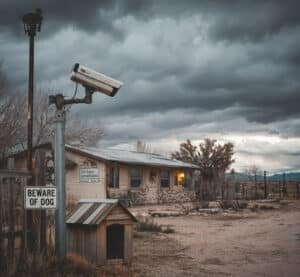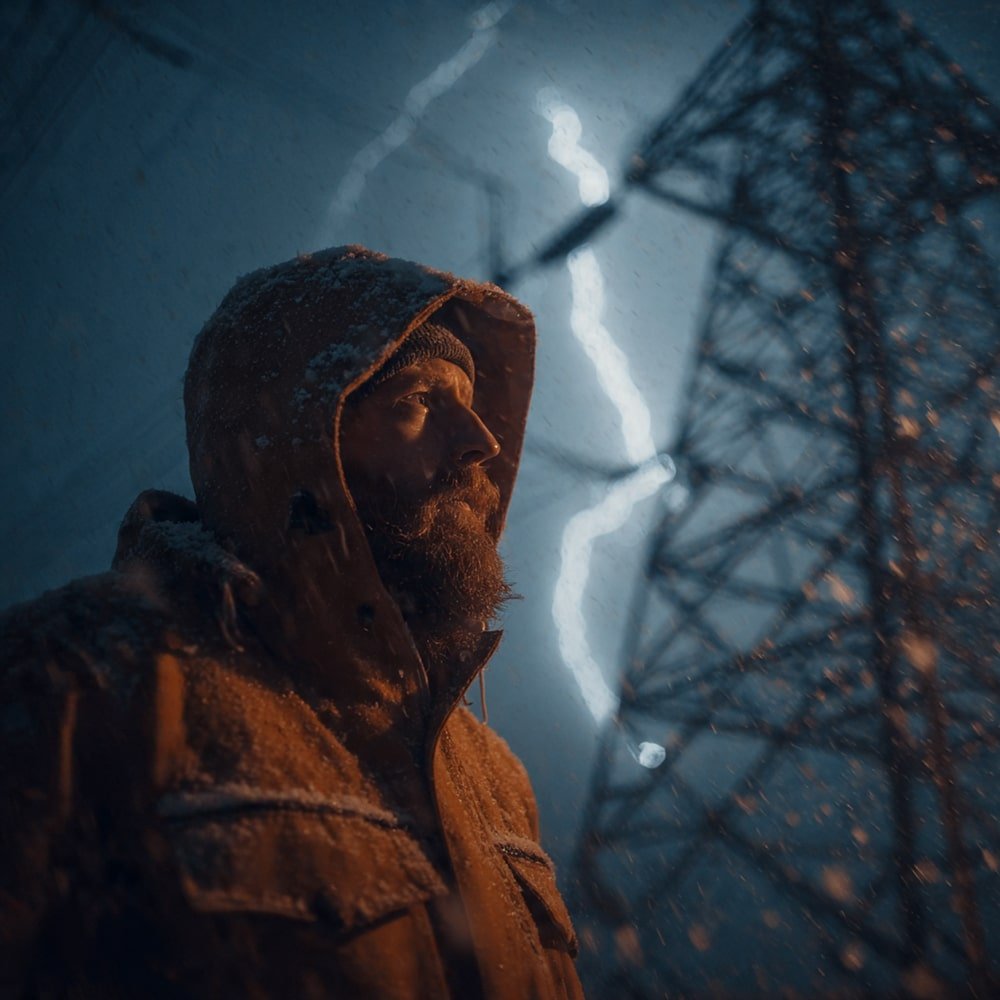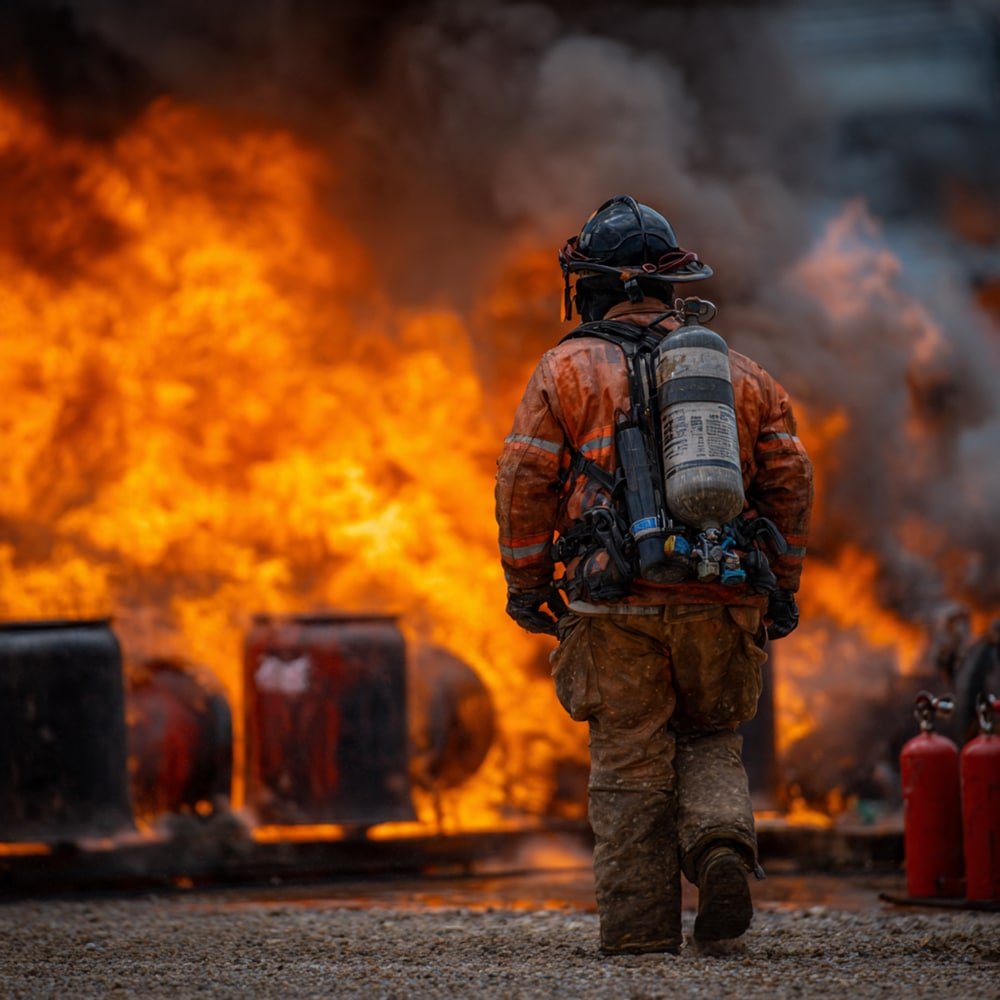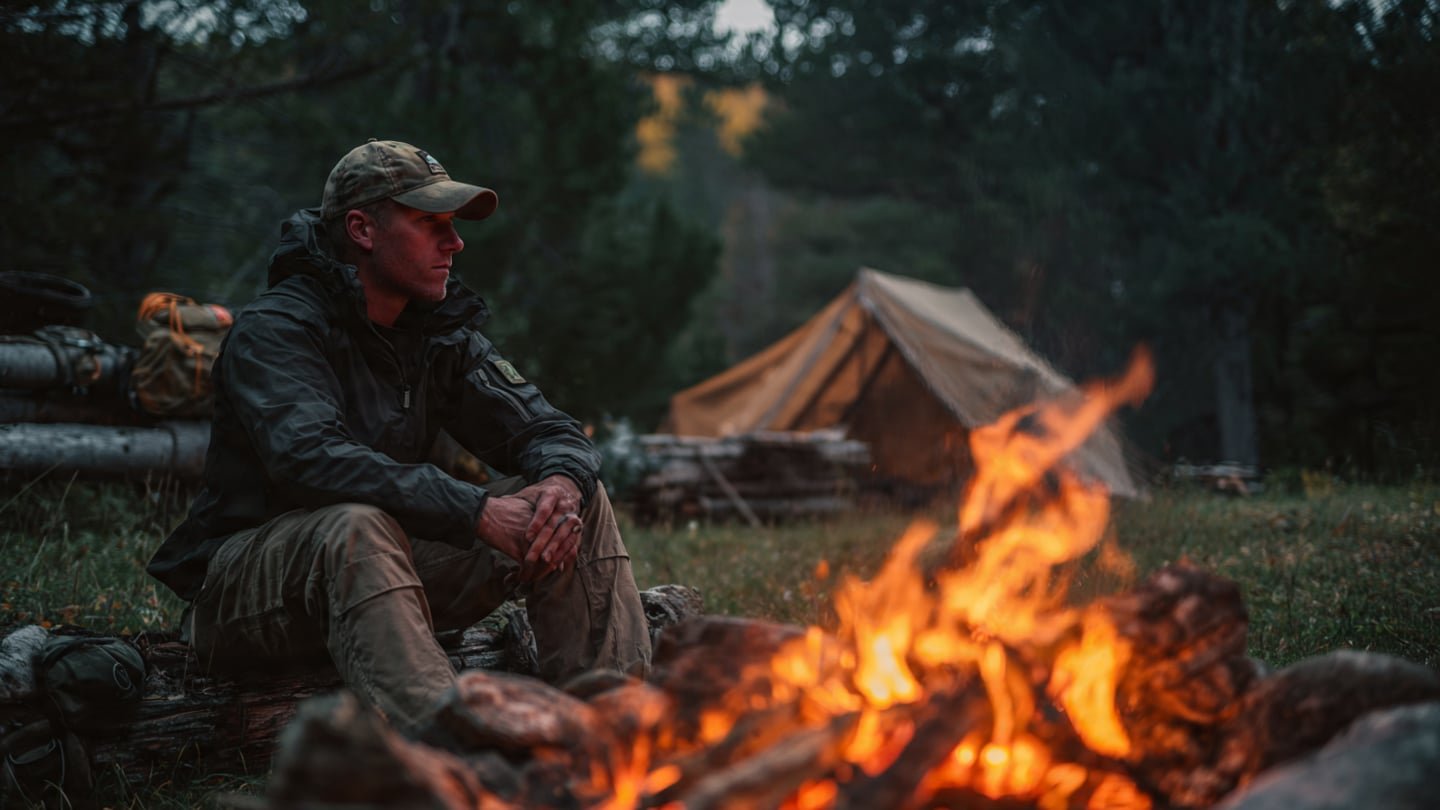New parents will spend a lot of time and money on baby stuff, a nursery, and baby needs. Those who think forward are already planning for their child’s future by putting money in the bank or making an investment plan. Those are absolutely fine. In fact, every parent should be doing them. It’s just that a few of us tend to forget the importance of preparing for emergencies. Would you know what to do in case of an emergency? Are you prepared in case disaster strikes? You never know what might happen next week or tomorrow or even an hour from now. That’s why new parents should read up on emergency preparedness tips and start building their disaster preparedness plan right now.
[lookbook id=”68605″]
Stay Up-To-Date
Always be aware of what’s happening around you. It may seem impossible considering almost all your time and energy are spent taking care of your newborn. However, you must understand that to be one step ahead of imminent danger, you must always be aware.
If you can’t watch the news or check social media for updates, listen to a weather radio instead. Once you get wind of an approaching weather disturbance, keep your weather radio close so you can catch updates and announcements.
The Eton Sidekick Weather Alert Radio offers weather news and alerts in case of natural calamities via NOAA and SAME weather stations. You can also listen to AM and FM stations while its Bluetooth feature, meanwhile, allow you to play music and podcasts.
The Sidekick is powered by a 2600 mAh rechargeable lithium battery that can be charged in three different ways. The charging cable lets you charge the portable radio through a wall socket while the built-in solar panel garners energy from the sun. You can also turn the hand crank for four minutes to get 10 to 15 minutes of power. Finally, you can also use three AAA batteries. Make sure you have one at home and another in your bug out bag so you can stay updated even if you have to evacuate your home.
Talk to Your Doctor
Discuss with your doctor what steps you should take when disasters strike. Your baby still needs medical care and that will obviously be hard to come by during such chaotic situations. Hospitals will likely be packed with patients or may even be inaccessible because of the disaster.
Make arrangements with your doctor so you know how to reach him or her when things go bad. You should also know where to go if your baby needs immediate medical attention and the hospital or clinic is not an option.
In case your doctor is unavailable, you should have other options. Check for other doctors and clinics in the area and get their contact numbers. If all else fails, it’ll be great to have a friend in the medical field. You can ask that friend for help when you’ve exhausted all other options.
It’s important to always have a way to communicate with other people, particularly your baby’s doctor. It’s completely possible for power to go out during a disaster. If that happens, you won’t be able to charge your phone and call for help.
Invest on a powerbank and a solar charger. The QuickHeat Rechargeable Hand Warmer not only keeps you from freezing to death, it also charges your phone and other small electronic devices. The portable powerbank by Frog & CO is an ideal survival tool to have when the weather gets too cold. Be careful when using it to keep your baby warm, though. The initial heat may be too much for him. You can probably use it on your hands first before placing your warm hands on your baby.
The QuadraPro Solar Power Bank with Wireless & Dual USB Charging by Frog & CO is another must-have for new parents or anybody else for that matter. That’s because the QuadraPro allows you to charge your devices, especially your phone, using the power of the sun. It can also be charged via wall outlet so you don’t have to worry about running out of juice. The solar powerbank can charge three gadgets at the same time – two using the USB output jacks and one via wireless charging.
Get Basic First Aid Training
We talked about getting medical help during emergency situations and how difficult it can be during disasters. In the event that you absolutely can’t contact anyone, you should be prepared to take matters into your own hands.
Learn first aid. Some injuries or medical issues need drastic action. This is doubly true for babies. You should be able to provide initial and immediate treatment. It’s particularly important to know how to give CPR to an infant.
You also need a first kit. This is different from the normal first aid kit you probably already have at home or in your bug out bag. Make sure you have everything you might need in your first aid kit. A first aid kit for infants should include a baby thermometer, bay nail clippers, baby tooth brush, medicine dropper, bulb syringe or nasal aspirator, saline nasal drops, among other things.
The Adventure Medical Kits Family First Aid Kit by Tender Corp has some of the basic supplies you’d need to treat medical emergencies such as wounds, burns, sprains, and fractures. Among the 78 items in the kit are different kinds of bandages, trauma pad, moleskin, antiseptic wipes, medical tape, cold pack, and a pair of nitrile gloves. Some of the tools are a pair of scissors, safety pins, splinter picker, compass and a Mini Rescue Howler Whistle. Medications include Acetaminophen, After Bite Wipe, Antihistamine, and Ibuprofen. You also get an antibiotic ointment, After Bite Kids (tube), and Natrapel 12 Hour Tick and Insect Repellent.
These items are by no means the only things you need in your first aid kit. Add other items you think are necessary, especially those that cater to infants. Check this out for more complete list of items you need for your baby first aid kit.

As mentioned, it’s imperative that you learn basic first aid, at least. The best way to learn is to attend training or classes. You should also read as many books or articles about first aid for babies. The First Aid Fast for Babies and Children: Emergency Procedures for all Parents and Caregivers, for example, teaches you how to deal with a wide variety of emergencies such as burns, bruising, and severe bleeding. Remember, the more you know the better prepared you are for emergencies.
Make An Emergency Preparedness Plan
Whether you’re alone or have a family, you need to make an emergency preparedness plan. The stakes increase if you have something as delicate as a baby.
What Are You Preparing For?
The first step to building an emergency preparedness plan is to know what you are preparing for. If you live in a place prone to a particular natural disaster then you must build your plan around that. For example, if you’re in an earthquake prone state like California or Arkansas then you need to prioritize earthquake preparedness. If you’re in Carmel, Indiana or Raleigh, North Carolina, then you should have an emergency plan revolving around floods.
A true prepper, however, will tell you that that is not enough. Aside from prepping for the expected disaster, you should also be ready for other emergencies. We’re not just talking about natural calamities here. You should also plan for man-made tragedies like home intrusion, fire, mass shootings, terrorism, and even an economic collapse.
Bugging Out
When sh*t hits the fan, you must evacuate. Discuss your evacuation plan with the whole family. Start by studying the layout of your home and pinpointing all possible exits. Next, outline the paths toward these exits. This way everyone knows how to get out no matter where they are in the house.
Prepare a bug out bag. Each member gets one even the children who are big enough to carry their pack. As for the baby, the adults will take care of her go bag. More on this later.

Part of your evacuation plan is to have designated roles. Who will get the baby and the baby stuff? One of the parents will be tasked with carrying the little one during evacuation. The other should know what to do in case the designated parent is unavailable.
If you have elderly people at home, who’s going to help them evacuate? How about the pets? Who’s going to lock the doors and windows? Who’ll be driving? You need to ask all the possible questions and come with the answers. This will keep people from double guessing what they need to do.
And before I forget, you need a baby carrier. It’s already difficult to carry your baby on normal days. Imagine how stressful and physically exhausting it’d be during an emergency. The Infantino Flip 4-in-1 Convertible Carrier can carry infants from 8 to 32 pounds. You can carry your baby in four different ways – facing you in a narrow or wide seat and facing away also in narrow and wide seats.
Also, place any type of identification on your infant, on the baby carrier, or on the car seat. God forbid but in case you lost your baby, the person who finds her can find a way to find you if you have your name and contact details on the baby. Aside from your details, you should also write down any medical condition you baby has.
Where to Go
Set a meet-up point for the whole family. This is where everyone should go in case you get separated. There’s also a high chance that you’re in different places when disaster hits. The dad may be at work and the older kids are at school while the mother and baby are at home. The first option should be to check the people at home then proceed to the designated meet-up point if there’s no one there.
If you have the means, you should purchase property and turn it into your bug out shelter. If that’s not possible, make arrangements with a relative or close friend. Ask if you can stay with them whenever you have to evacuate your home. In other words, their home will be your bug out shelter.
Your bug out shelter should have ample supplies. Since you have a baby, you should also stockpile some baby stuff in your shelter. Speaking of babies, if you’re going to an evacuation center, inform someone of authority that you have an infant. They should tell you what to do and where to go.
Another important part of your emergency preparedness plan is to trace all possible routes to your safe place. Start from your home and figure out the fastest way to get to your shelter or meet-up point. Check other routes in case the first one is not passable.
Prepare the Car
It’s quite difficult to bug out if you’re on foot, especially if your shelter is quite far. Having a baby doesn’t make things any easier. If you have a car, you can reach your destination faster and safer. That is if the roads aren’t flooded or blocked by huge debris. Still, you have to prepare your vehicle for evacuation.
First of all, you need to make your car baby-friendly. That means you need to buy the best car seat available and make sure you install it correctly. One of the best baby car seat according to Safety.com is the Graco 4Ever DLX 4-in-1 Infant to Toddler Car Seat. One reason why it’s worth the money is its flexibility. It can be adjusted to fit infants to toddlers.
The harness system can be changed into ten different positions. It can be made to the face front or back. The harness can also be a high-back booster or a backless booster. More importantly, the car seat protects your child in case of front, rear, side, and rollover accidents. The Graco 4Ever also comes with the RapidRemove seat cover and inRight LATCH system.
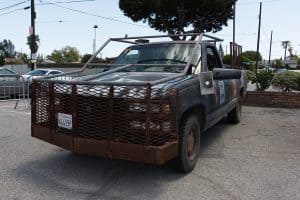
Always keep your tank full. In a disaster, fuel is one of the most sought after commodities. A full tank means you don’t have to stop at a gasoline station to refuel. Aside from fuel, you can also fill you vehicle with food, water and other supplies including baby items like a portable crib, and stroller. Don’t forget your tools and car emergency kit.
[lookbook id=”68610″]
Building A Baby Bug Out Bag and Emergency Kit
A baby emergency kit is different from the bug out bag. The BOB is something you take when you have to evacuate. It should be portable, which means you can’t stuff as much supplies as you’d want. You need to take into account how heavy your go bag would be. If it’s too heavy, you’ll get tired faster and have a more difficult time handling your child.
A baby emergency kit, meanwhile, is what you have at home. The difference is that you can only carry at least three days’ worth of food and water in your bug out bag. For you emergency kit, you can stockpile as much as you can.
Water
Your baby emergency kit should include clean water. Infants get dehydrated faster so you need ample stock at home in case the water supply is cut off. Stock up on bottled water. Get some WaterBricks, too. These stackable BPA-free water containers can hold up to 3.5 gallons of water each. They’re designed to be easily stacked so you make the most of your space at home.
In case you still run out of clean water for your baby, you should be able to treat the water that you have or can gather. Babies can’t sip from a personal water filter but you should still get one for each member of the family. Stockpile water purification tablets.
Baby Food
Stock up on powdered milk or formula even if mom is breastfeeding. It’s common for a mother to have difficulty producing milk when she’s stressed. If that happens, be ready to feed your baby formula. Of course you’ll need clean water for this.
If your child is big enough to take in solids, make sure you stockpile on baby food, too. Get the ones in pouches. Baby food in glass jars are heavy and can be dangerous if they break.
Pack baby bottles, bottle cleaners, and other items you need to prepare your baby’s formula. Bring BPA-free spoons and food containers for your baby food.
Medications
Aside from your baby first aid kit, you should stock up on medications. Make sure you have something for fever, cough, rashes, and other common medical issues. You also need oral dehydration salts, zinc cream, and saline drops. Of course, some of these may need doctor’s approval so consult with them first. Speaking of, if your baby has an existing medical condition, make sure you have ample supplies of the particular medicine she needs.
Diaper Kit
Many parents prefer cloth diapers because they’re environment-friendly. This is a good thing really. In fact, it’s great that people are now more aware of what’s good for Mother Earth and her innocent residents. However, cloth diapers won’t cut it during emergencies or disasters.
Simply put, you won’t have the luxury of time and enough supply of water to wash dirty diapers. Plus, you can’t really stop to change diapers while you’re running away from zombies or tornadoes.
Use cloth diapers at home by all means but stockpile disposable ones for emergency situations. Pack at least 5 days’ worth of disposable diapers in your baby bug out bag. Don’t forget the changing pad, baby wipes and trash bags.
https://www.youtube.com/watch?v=W9XXgbLmrPk
A changing pad is necessary since you don’t know how dirty surfaces outside your home will be. The Summer Contoured Changing Pad is made of 100% waterproof quilted vinyl so cleaning up after changing your baby should be a breeze. The walls are contoured to keep the baby from rolling to the sides. The quick release safety belt also serves that purpose. The anti-skid bottom and security strap underneath the pad, meanwhile, is meant to keep it from sliding or falling.
Warm Clothes
Babies get cold easy. They need extra layer of clothing and other body warmers to protect them from the cold. You may notice that a baby’s hands and feet seem colder than the rest of her body. That’s because the heat goes to the vital organs since they need it most. Make your little darling wear baby mittens and boots to keep their extremities warm.
The Hudson Baby Unisex Cozy Fleece Booties is 100% polyester. The machine washable booties keeps your baby warm by trapping heat inside and drawing sweat away from her gentle skin.
Other baby items that should be in your bug out bag include extra clothes, hat, and a hoodie or sweater. Don’t forget to pack a wool blanket, too. Mylar blankets and ponchos are bug out bag staples so make sure you have them, as well.
Baby Leash
This may seem like a harsh emergency preparedness tip but some babies need to be put on a leash. Now before you type an angry response in the comment section, try to understand this first. When you’re in an evacuation center where there are tons of people, it’s easy to lose a child. We all know how crawling babies can be a pain in the buttocks.
Other Bug Out Bag Essentials
Other baby needs include her pacifier, and favorite blankie or toy. You’ll also need an alcohol-based hand sanitizer to disinfect your hands before handling your baby. For more grab bag essentials, check out this list.
When it comes to emergency preparedness tips for new parents, you shouldn’t forget about the mother. Carrying the baby in her tummy, going into labor, and giving birth are no easy tasks. New moms are prone to post-partum depression so you better pack stuff that will help her cope with the added stress. Talk this through with your spouse or partner.

Your love for your children is not measured by the price tag on the gifts you buy for them. Sometimes a simple present or act is enough, especially if it means your baby will be safe from any kind of harm. Learning as many emergency preparedness tips as you can is one way of showing that unconditional love. Check out Gentleman Pirate Club for similar tips and more.


















